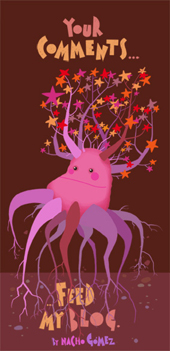
I was very surprised and delighted to be contacted a few weeks ago to be invited to accept a rather prestigious award! Frit Happens, a flameworkers forum I’m a member of, invited me to be July 2010 Artist of The Month! My first reaction was ‘are you sure!’ Looking back at some of the previous recipients has some amazing glass artists, so it’s quite an honour to be included in such fantastic company and to get such recognition from my peers. If you’d like to read the full article it can be found at http://www.frit-happens.co.uk/forum/index.php?topic=21804.0

Meanwhile I’ve been prowling around the workshop in the dark! Not because I’ve had a power cut, but as I’ve been playing with black-lights and glass! Black-lights (for anyone who doesn’t know) are those deep blue UV fluorescent lights that are used alot in nightclubs. Various special plastics really react and glow vividly under their light, whites reflect them very intensely, and they show up any dust on you like your covered in flour! They are often used by stamp collectors to check imperfections and marks on stamps, when I was playing the light it even showed where I’d missed tiny bits when the walls were painted!
I’ve found that a few soft glasses do reflect back the UV, but I really wanted boro colours that worked with it. I wasn’t surprised to see that the purples became so much more intense, but they still didn’t have that glow. I had tried glow in the dark powders which can be mixed into glass, but had trouble with them burning out, but a few questions on the forum and more research and found that the glow-in-the-dark colours I had tried didn’t like the higher temperatures that boro needs to melt. I got a great ‘aqua’ colour and it works a treat! Not only does it literally ‘glow-in-the-dark’ but like most of these pigments it reacts really strongly to the UV and looks radioactive!

Whilst searching out boro colours I discovered one factory used to make a reactive colour that is normally clear and vivid pink when lit by blacklight. It hasn’t been made for 8 years, but I found someone who had just 7 sticks left! Sadly they said they had none of a related colour with the fabulous name of ‘Atomic Kumquat’ but when I got the rods noticed one was slightly lighter in colour. When I popped my blacklight on it glowed orange! Yes, I am now the owner of 6 rods of ‘Electric Flamingo’ and one precious rod of ‘Atomic Kumquat!’ I’m really going to be careful how I use these, although I must say I’m finding the effect from the glow powers much more effective. I’m still experimenting to get the most out of these, but I hope to have some made ‘club-wear’ pendants ready soon, along with some new versions of Gilson Opal pendants too! It’s exciting times here, and great to be working with such unusual materials, I hope to be able to share the fruits of this with you soon!

Meanwhile I’ve been prowling around the workshop in the dark! Not because I’ve had a power cut, but as I’ve been playing with black-lights and glass! Black-lights (for anyone who doesn’t know) are those deep blue UV fluorescent lights that are used alot in nightclubs. Various special plastics really react and glow vividly under their light, whites reflect them very intensely, and they show up any dust on you like your covered in flour! They are often used by stamp collectors to check imperfections and marks on stamps, when I was playing the light it even showed where I’d missed tiny bits when the walls were painted!
I’ve found that a few soft glasses do reflect back the UV, but I really wanted boro colours that worked with it. I wasn’t surprised to see that the purples became so much more intense, but they still didn’t have that glow. I had tried glow in the dark powders which can be mixed into glass, but had trouble with them burning out, but a few questions on the forum and more research and found that the glow-in-the-dark colours I had tried didn’t like the higher temperatures that boro needs to melt. I got a great ‘aqua’ colour and it works a treat! Not only does it literally ‘glow-in-the-dark’ but like most of these pigments it reacts really strongly to the UV and looks radioactive!

Whilst searching out boro colours I discovered one factory used to make a reactive colour that is normally clear and vivid pink when lit by blacklight. It hasn’t been made for 8 years, but I found someone who had just 7 sticks left! Sadly they said they had none of a related colour with the fabulous name of ‘Atomic Kumquat’ but when I got the rods noticed one was slightly lighter in colour. When I popped my blacklight on it glowed orange! Yes, I am now the owner of 6 rods of ‘Electric Flamingo’ and one precious rod of ‘Atomic Kumquat!’ I’m really going to be careful how I use these, although I must say I’m finding the effect from the glow powers much more effective. I’m still experimenting to get the most out of these, but I hope to have some made ‘club-wear’ pendants ready soon, along with some new versions of Gilson Opal pendants too! It’s exciting times here, and great to be working with such unusual materials, I hope to be able to share the fruits of this with you soon!



Well done on AOTM Glenn, so well deserved!
ReplyDeleteCONGRATULATIONS, sweetie!! You deserve it!!
ReplyDeleteI can't wait to see more of the UV experiments!!
Love,
k
x
Thank you, it means so much to get such a lovely honour from fellow lampworkers :)
ReplyDelete